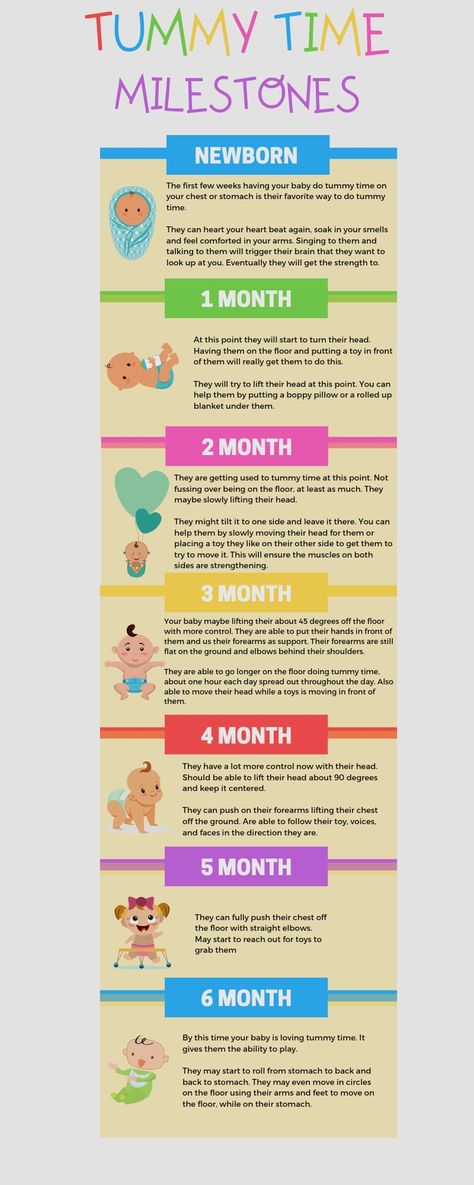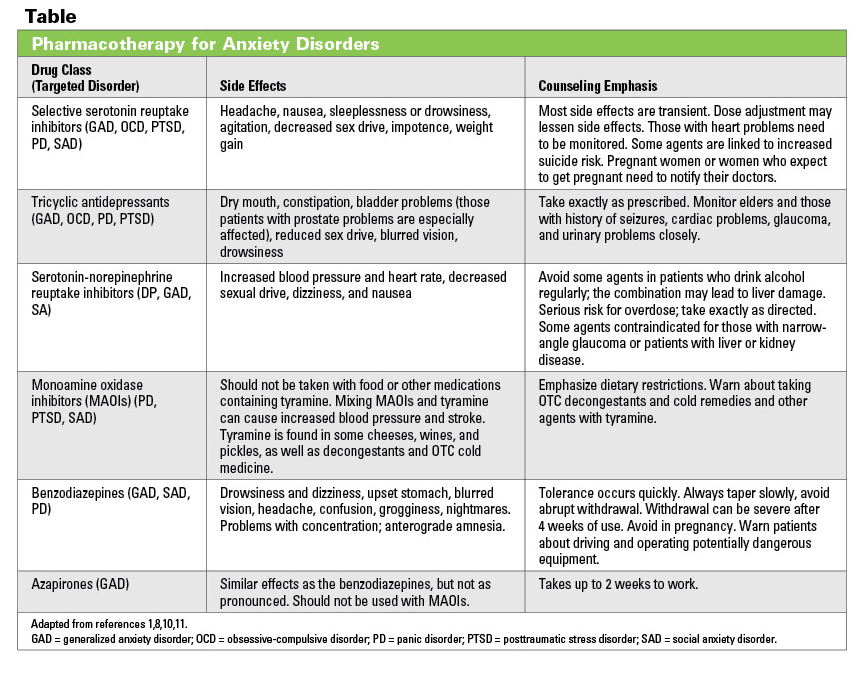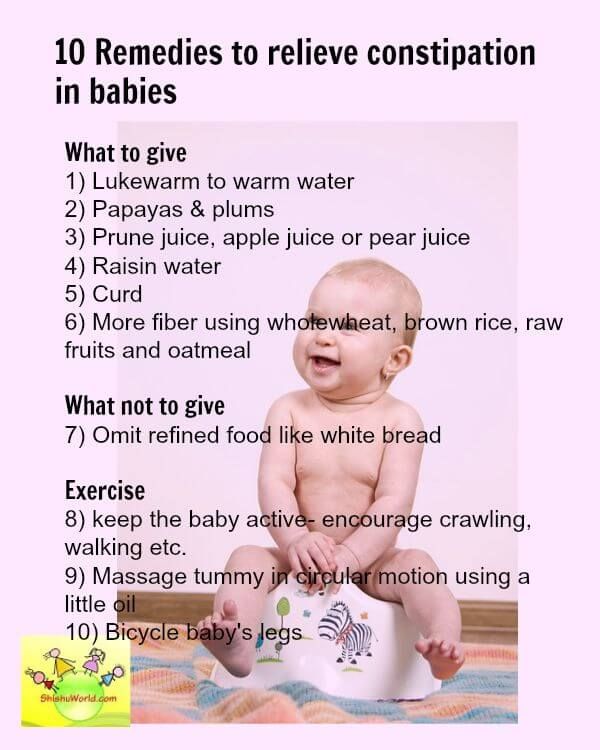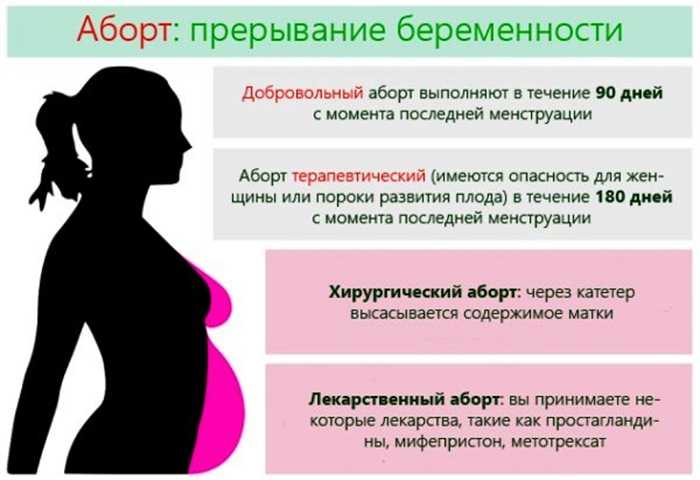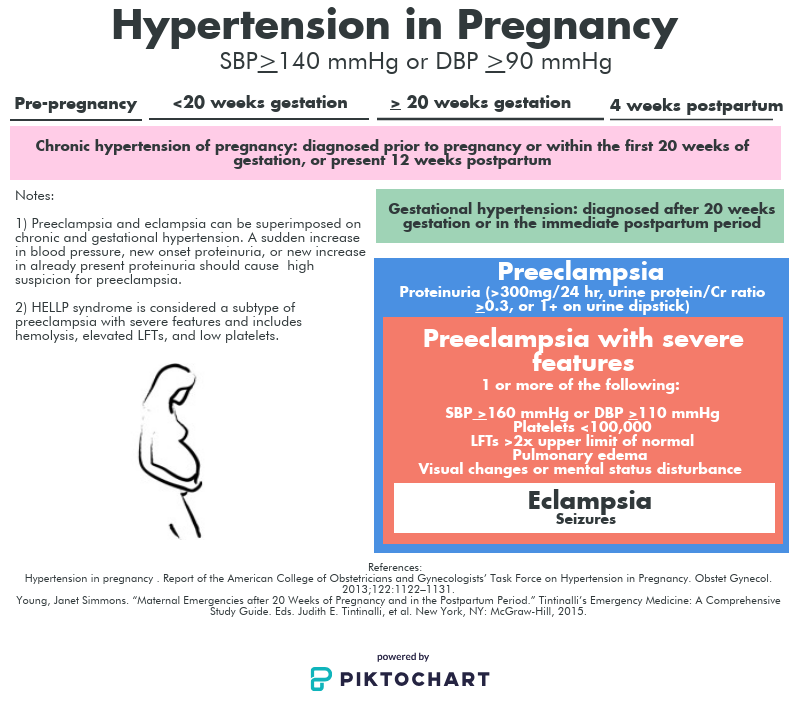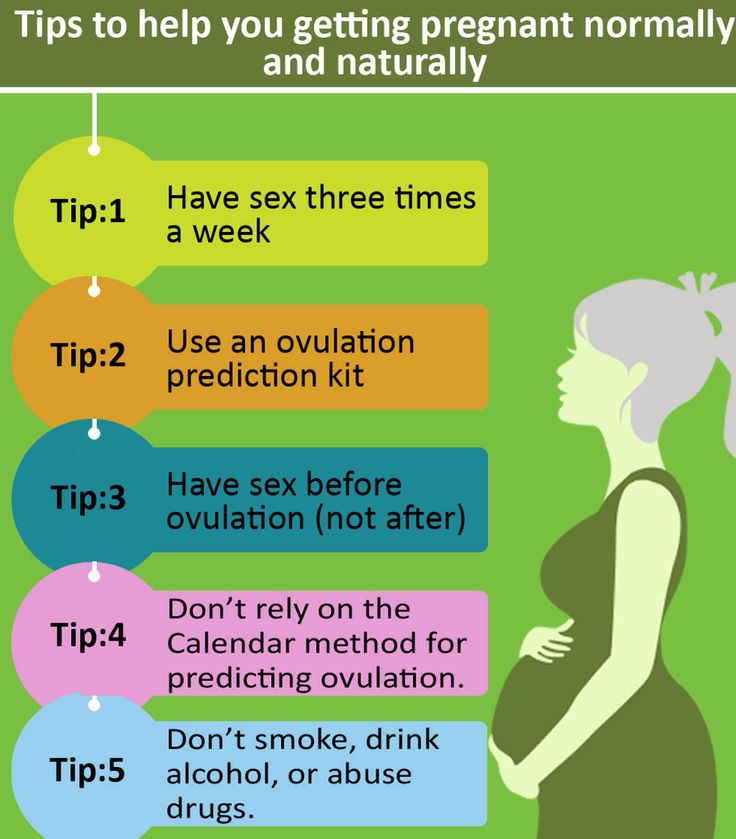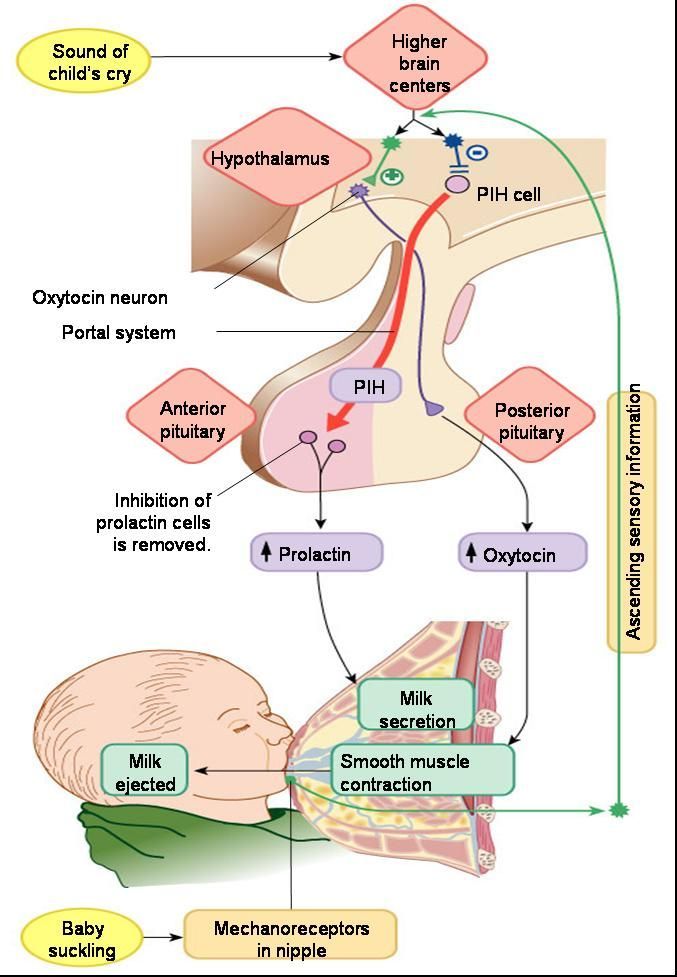Newborn milestones week
Baby Games & Milestones Calendar
Find activities, milestones, and games based on baby’s date of birth Get these by email!
Enter Baby's Birthday (Remember to adjust for prematurity)
Month Day Year Update- Tummy to Play: Always remember: back to sleep, tummy to play. Baby may not like being on their tummy at first because back and neck muscles are not very strong yet. Make Tummy Time part of baby’s daily routine starting with a few minutes at a time, a few times a day. Helps baby develop core strength.
- Face-to-Face: Lie down propped up by a pillow and place baby tummy down on your chest so you’re face-to-face.
Hold firmly so baby does not roll off. Helps baby strengthen core muscles and achieve developmental milestones.
- Get to Know Baby: Take time to get to know baby in every way. Smile at them. Touch hands, feet and forehead. See how they wiggle and react to touch and voices. Helps you connect with your baby.
Get these games by email
Share This!
*The activities listed over these next few months are designed to help your baby as they move towards the following three month milestones.
If you are concerned that your baby isn’t meeting these milestones by three months, trust your instincts and talk to your healthcare professional.
Milestones
- While lying on tummy, pushes up on arms
- While lying on tummy, lifts and holds head up
- Able to move fists from closed to open
- Able to bring hands to mouth
- Moves legs and arms off of surface when excited
- While lying on back, attempts to reach for a toy held above their chest
- While lying on back, visually tracks a moving toy from side to side
- While lying on back, keeps head centered to watch faces or toys
- Able to calm with rocking, touching, and gentle sounds
- Enjoys a variety of movements
- Quiets or smiles in response to sound or voice
- Turns head towards sound or voice
- Shows interest in faces
- Makes eye contact
- Cries differently for different needs (e.
 g. hungry vs. tired)
g. hungry vs. tired) - Coos and smiles
- Latches onto nipple or bottle
- Tongue moves forward and back to suck
- Drinks 2 oz. to 6 oz. of liquid per feeding, 6 times per day
- Sucks and swallows well during feeding
Your Newborn Baby: Milestones and Development
Welcome to parenthood! Along with experiencing the joy and excitement a new baby brings, you might be feeling exhausted and overwhelmed, too—and we're here to help! We’ll take a look at your newborn’s development milestones from birth to 1 month; discuss how often and how long your baby may feed and sleep this month; and review important information about your newborn baby’s health. Your baby’s healthcare provider is the expert on healthy development, but we’ll touch on some of the highlights and provide some useful tips. Here's what's going on in this first month with your newborn and what you can anticipate in your 1-, 2-, 3-, or 4-week-old baby’s development.
In weeks one to four after your baby’s birth, your little one is getting used to life outside the womb. You may be amazed by all the growth and changes you're seeing! Here are some highlights:
Growth and Physical Development: It’s Normal for a Newborn to Look a Little “Odd”In the first few days after birth babies can lose a little weight—this is mostly excess body fluid. Most babies will regain the weight quickly, so that by day 10, they’re back to their birth weight. Your baby’s healthcare provider will track your baby's growth carefully, measuring their length, weight, and head circumference at each checkup.
Over time, the provider will use these measurements to gauge trends in your baby's rate of growth. Read more about how the provider uses baby growth charts.
You’ll be spending lots of time gazing at your new baby, and although you’ll love every inch of them, you might find they look a little “funny” at first.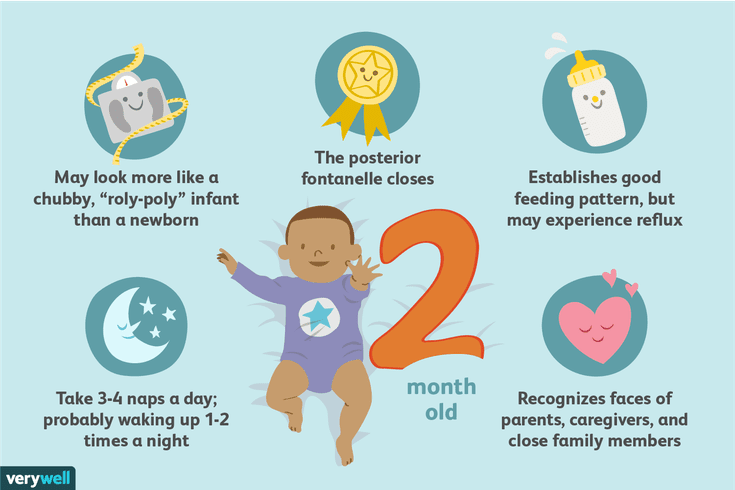 They’ve just entered the world, and their body is still adjusting.
They’ve just entered the world, and their body is still adjusting.
Here are some of the unusual physical features you might notice in the first few weeks with your newborn:
Fine hair called lanugo may cover their body for a few days or weeks until it’s shed.
Their skin may peel a little.
Reddened areas of skin called “salmon patches” or “stork bites” may be present on their face or neck; these birthmarks will likely disappear within a few months.
Your baby’s genitals may be swollen but will return to normal soon.
Two soft spots, called the fontanelles, can be felt at the top of your baby’s head. Although a thick membrane protects the brain, this is where the skull bones are still fusing together.
If your baby was born vaginally, they may have an elongated skull. This happens because the plates of the skull adjust to allow an easier passage through the birth canal. Your baby’s head will return to a more normal shape before long.
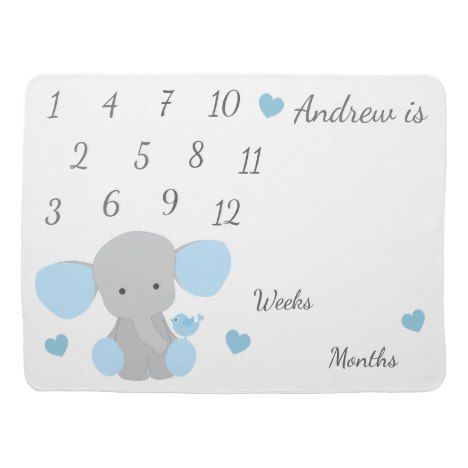
Your baby may spend a good amount of time curled up in a tight little bundle—just as they were in the uterus. Toward the end of this first month, they’ll start to stretch and unfold from this preferred fetal position.
For a newborn, one of the most important senses is touch, and your little one will sense your mood by the way they’re being touched. Being held and carried by you provides security and comfort.
Always support your baby's head and neck, making sure that their head doesn't flop from side to side or front to back. Gently rocking them may help quiet and calm them, and massaging your little one may help you bond.
Watch this short video guide on massaging your newborn for more on this topic:
If you’re wondering, how far can a 1-, 2-, 3-, or 4-week-old see, typically, they can only see about 8 to 12 inches away. This means your baby can see your face as you hold them. Their own hands will also attract their attention as they pass by in front of them.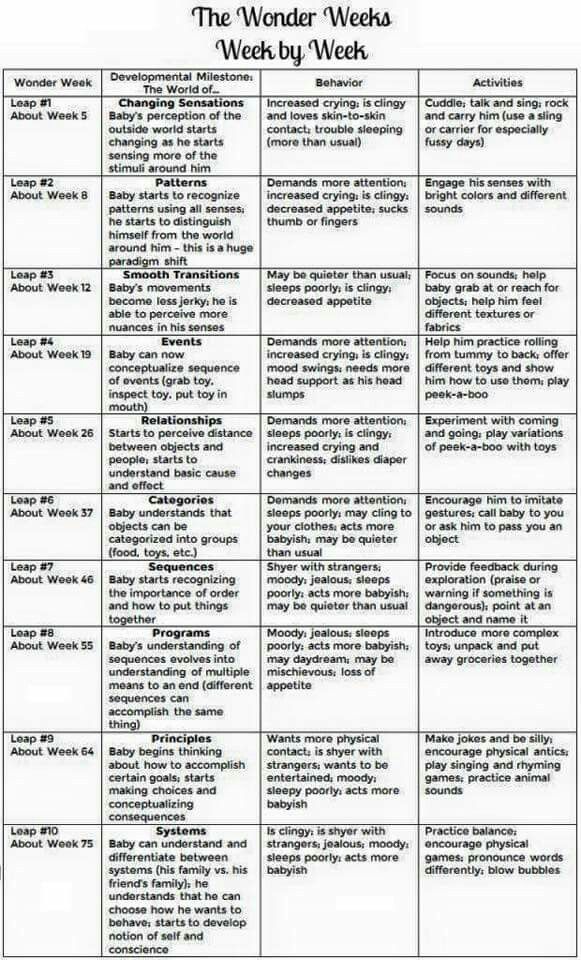 At this stage, babies can tell light from dark, but they can't see the full range of colors.
At this stage, babies can tell light from dark, but they can't see the full range of colors.
Newborn babies typically prefer to hear high-pitched sounds and “baby talk.” As you talk to them, they’ll probably turn their head to face you.
Movement: Your Baby’s Instincts Are as Strong as Their GripIn the first few weeks, your baby’s movements may seem very jerky, but in the coming months, they’ll slowly become more controlled. Here are some of the common reflexes newborns have at birth:
Rooting. Your baby will turn their head toward your finger in response to their cheek or mouth being stroked.
Sucking. Your baby can instinctively suck, but coordinating sucking, breathing, and swallowing requires a fair amount of skill, so it may take a short while for your baby to get the hang of it when nursing.
Moro reflex. If your baby is startled by a noise, or their head shifts position suddenly, they may react by extending their arms and legs suddenly and then bringing them close together.

Strong grip. If you touch your baby’s palm, they will grip your finger. Don’t support them using this hold, as your baby has no control over this grip and may let go suddenly.
Stepping. When holding your baby in a standing position with the soles of their feet touching a surface, you may notice them do a stepping motion.
At the start of this month, you might see your baby smile in their sleep. Experts aren’t quite sure why this reflexive smiling happen, but it could be because your baby is responding to an internal impulse.
But don’t worry: Your baby’s first smile—the real deal—is on the way. Toward the end of this month or in the second month, your baby will smile when they are awake in response to something like your face as you smile at them or the sound of your voice. Over time, they will learn that smiling is a way for them to communicate.
Newborns cry to communicate things like hunger or discomfort, or to release tension.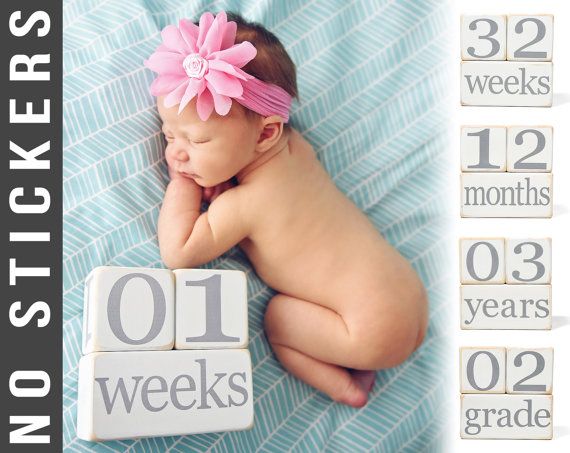 If your baby is crying but doesn’t need feeding, burping, or diaper changing, they may just need a little attention. Try comforting them by cuddling them or soothing them with your voice, which might just work to settle them. In some cases, persistent crying could indicate colic or another health condition. Consult your baby’s healthcare provider to check that everything is OK.
If your baby is crying but doesn’t need feeding, burping, or diaper changing, they may just need a little attention. Try comforting them by cuddling them or soothing them with your voice, which might just work to settle them. In some cases, persistent crying could indicate colic or another health condition. Consult your baby’s healthcare provider to check that everything is OK.
Even in these first few days and weeks you may get early hints about your little one's personality. Do they cry about a wet diaper, or seem generally content? Are they easily startled, or do they take things in stride? If you have older children, you may even pick up differences in your baby's and their older siblings’ temperaments at this early stage.
related baby tool
Keep an eye on your baby’s average growth by tracking height, weight, and head circumference with our simple tool.
Fill out your baby's details*:
What is your child*
Boy Girl
This is a mandatory field.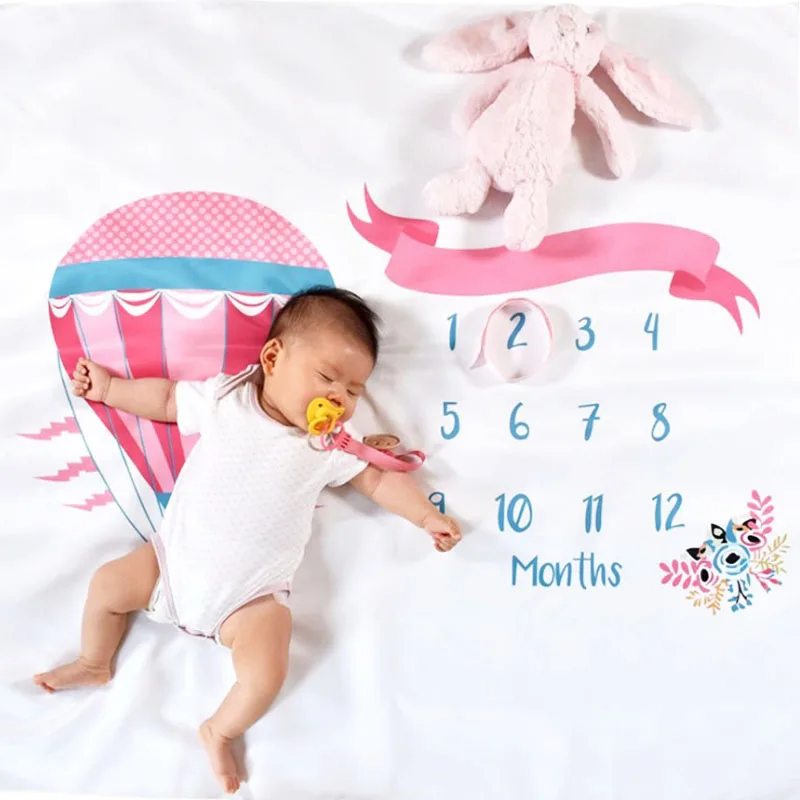
Age (between 0 and 24 months)
This is a mandatory field.
Weight (lbs.)
This is a mandatory field.
Height (in.)
This is a mandatory field.
Head circumference (in.)
This is a mandatory field.
*Input details of your baby’s last measurements. **Source: World Health Organization
Activities for Supporting Your 1-, 2-, 3-, or 4-Week-Old Baby’s Development
Your baby’s healthcare provider will be able to give you lots of personalized advice, but these are some activities you can try with your baby whether they’re a 1-week-old, 2-week-old, 3-week-old, or 4-week-old:
Skin-to-skin contact.
 This is when your naked baby is placed against your uncovered chest. It’s good to practice this “kangaroo care” from right after your baby is born and during their first few months. The benefits of skin-to-skin contact include improved bonding between you and your baby and helping to regulate their breathing and heart rate.
This is when your naked baby is placed against your uncovered chest. It’s good to practice this “kangaroo care” from right after your baby is born and during their first few months. The benefits of skin-to-skin contact include improved bonding between you and your baby and helping to regulate their breathing and heart rate.Tummy time. Put your baby on their tummy on the floor for a short time each day to help strengthen their neck and shoulders, as you closely supervise. Tummy time can start as early as 1 week old.
Tracking practice. As your baby’s distance vision develops, they’ll slowly become better at following moving objects with their eyes. To help them practice, try moving an object—like a rattle—slowly in front of them.
Playing. You might be wondering how to play with your little one at this early stage. Check out these short video guides on taking care of your newborn, including tips for playtime, teething, bathing, and games that help develop your baby’s senses.
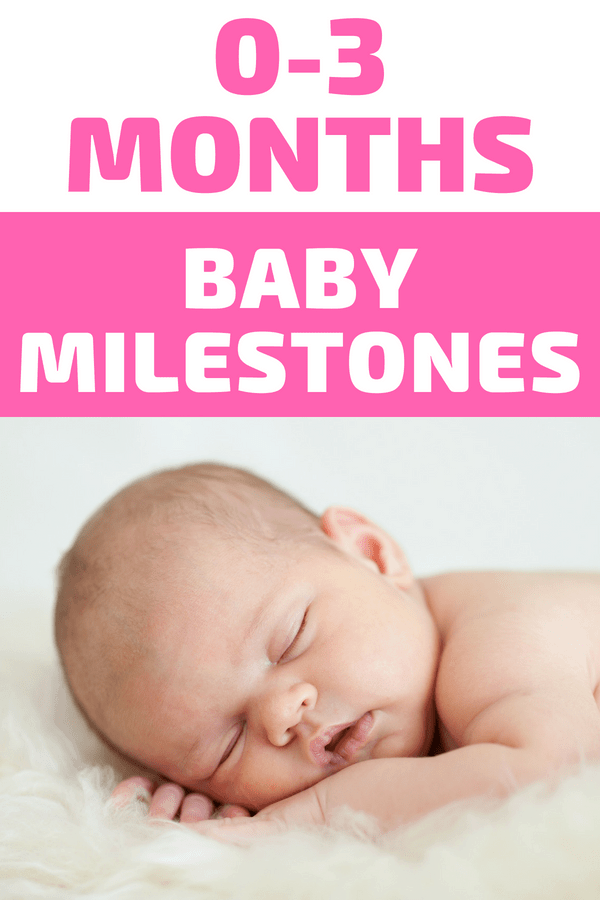
The good news is that you won’t need to set or follow a rigid feeding schedule for your 1-, 2-, 3-, or 4-week-old baby. Instead, watch for your baby’s hunger signals to get to know what’s normal for them. This month, your baby may show hunger by rooting (see the reflexes above), lip smacking, or sucking on their fist.
Crying can also be a late sign of hunger, but it’s better to feed your baby before they get to this stage, rather than waiting until they’re really upset. You'll likely feed your baby at least eight times in each 24-hour period, both during the day and night.
During growth spurts—which occur at different times for different babies, but often at 1 week old and between 3 and 6 weeks old—your baby may be hungrier than usual. When they’re full, they may look tired or fall asleep.
If you’re breastfeeding and are concerned about your milk supply, or wondering whether your baby is latching or nursing properly, ask your healthcare provider or a lactation consultant for help. You can also check out this go-to breastfeeding guide we’ve created just for you!
You can also check out this go-to breastfeeding guide we’ve created just for you!
Regardless of whether your baby is breastfed, formula-fed, or a combination of both, you may want to consult your baby’s healthcare provider about whether you should supplement your baby’s nutrition. For example, vitamin D and iron supplements may be advised.
Tracking Wet and Dirty DiapersIt’s natural to wonder whether your baby is getting enough to eat. One way to check is to keep track of diaper changes—how many diapers you change, and how they look.
In the first few days, don’t be surprised if your baby’s bowel movements are thick and dark green or black. These are normal first bowel movements, made up of meconium, a substance that filled your little one’s intestines before birth.
After the meconium has passed, your baby’s stools will switch to a yellow-green color and become softer and runnier. Each baby is different, but you can probably expect at least six wet diapers and at least three or four poopy diapers a day.
Other signs your baby is eating enough include if you can hear your baby swallow, and if they seem content for a few hours after nursing. Over a longer period, your baby’s healthcare provider will help check your baby is getting enough nourishment by monitoring their growth.
Although those first few diaper changes can be challenging, you’ll soon be a pro! In fact, you’ll be changing so many diapers you’ll may feel you deserve a prize. Download the Pampers Club app and start earning cash back for all your diapers and wipes purchases. Not only that, but the app can also help you keep track of your baby’s development and provide useful insights to help guide you in your parenting journey.
How Much Sleep Does a Newborn Baby Need?You might be wondering how much “should” a 1-, 2-, 3-, or 4-week-old baby sleep. In the first few weeks, your baby will likely sleep at least 16 hours in each 24-hour period. But this sleep schedule can vary from baby to baby and day to day.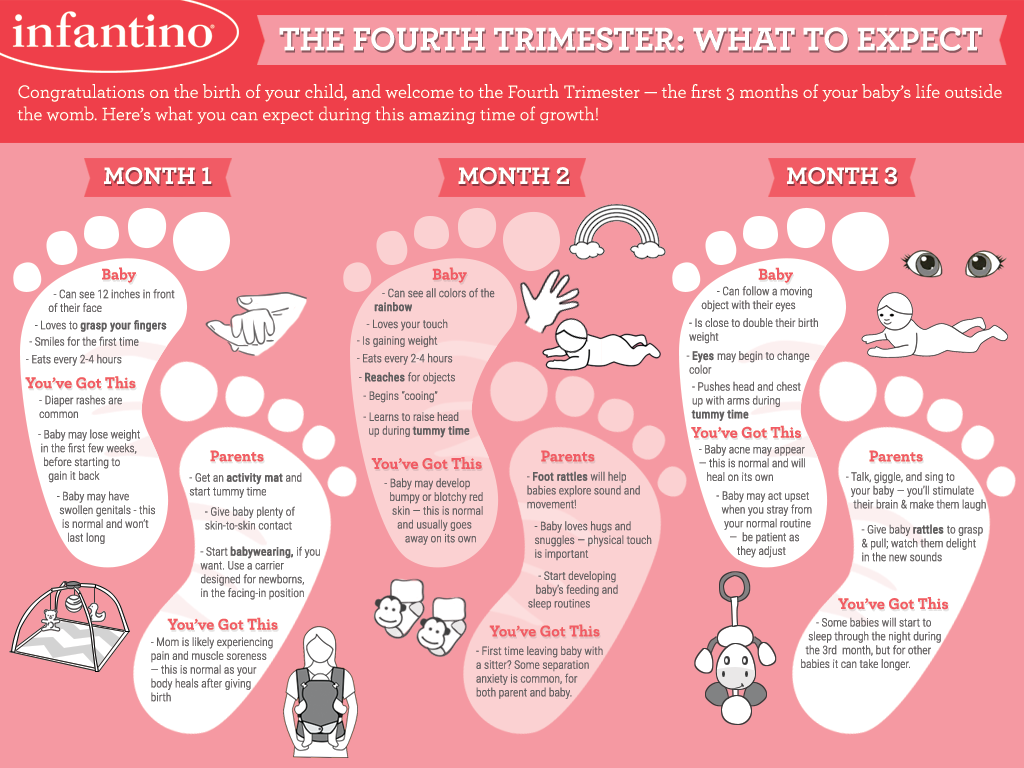 Should you wake your 1-, 2-, 3-, or 4-week-old baby to feed? Yes, because your newborn’s stomach can only hold so much milk, you’ll need to wake them for feeds during the night if they don’t wake naturally.
Should you wake your 1-, 2-, 3-, or 4-week-old baby to feed? Yes, because your newborn’s stomach can only hold so much milk, you’ll need to wake them for feeds during the night if they don’t wake naturally.
Although your baby doesn’t know the difference between day and night yet, start teaching them by keeping night-time feedings low-key. Don’t turn on bright lights, keep diaper changes brief, and instead of playing, put them right back to sleep on their back.
If you’re hoping your baby may start sleeping through the night sometime soon, be patient, as that's not likely to happen for a few months at the earliest.
Safe SleepFor the first year of your baby's life, always put your baby to sleep on their back in their crib for nighttime sleep and naps. Also, make sure the crib is bare, free of clutter like loose sheets, blankets, bumper pads, pillows, and toys, and have the crib in your room for at least the first six months.
These crucial steps help reduce the risk of SIDS (sudden infant death syndrome), which is the unexplained death of a healthy baby in the first year of life. Alwayskeep the ABCs of safe sleep in mind. Your baby should always sleep
Alwayskeep the ABCs of safe sleep in mind. Your baby should always sleep
ALONE
on their BACK
in a CRIB.
Although a routine involving a newborn baby will vary from day to day, here is an example of a routine for feeding, sleeping, bathing, and play:
Going OutsideFeel free to take your newborn outside in nice weather, making sure they are dressed appropriately. Your baby’s ability to regulate their body temperature hasn’t fully developed yet, so the general rule of thumb is to add one more layer of clothing for them than you are wearing.
If it’s sunny, keep your baby out of direct sunlight or in the shade, as their skin can get sunburned easily. If it’s very cold or rainy, it may be best to head out for just a short time. Make sure your baby has a warm hat on, plus enough extra layers and blankets.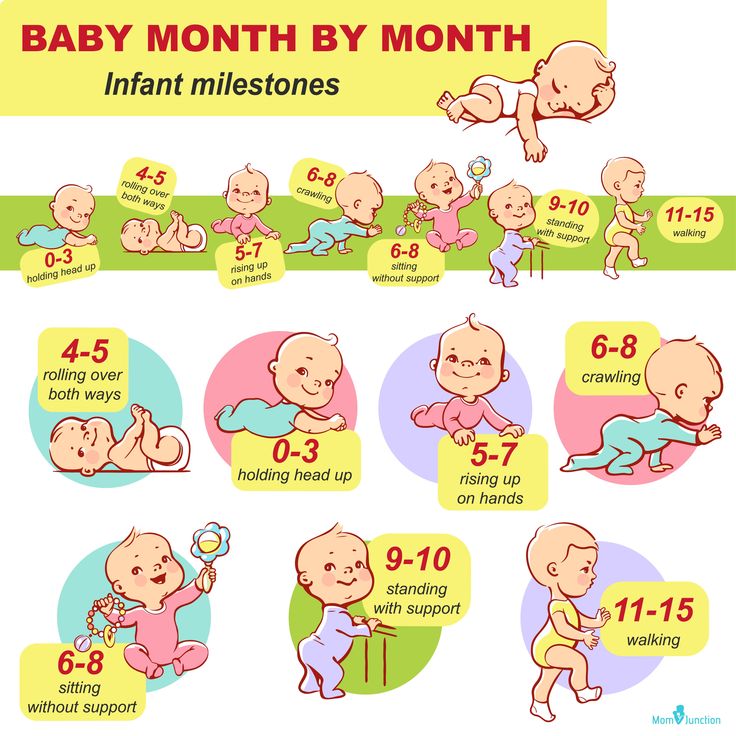 To check if your baby’s comfortable, make sure their chest is warm, and that their hands and feet are a little cooler than the rest of their body.
To check if your baby’s comfortable, make sure their chest is warm, and that their hands and feet are a little cooler than the rest of their body.
One of the fixtures of your baby’s daily routine will be having their diaper changed. Make sure you have all the supplies you’ll need within reach before you begin. Keep one hand on your baby at all times and don’t leave your baby alone on the changing table, or on any surface that's higher than the floor, as they can easily wriggle and fall.
To help prevent diaper rash, remove wet or soiled diapers as soon as possible. After removing the dirty diaper, clean the area by using a gentle wipe, and put on a fresh diaper. Read more about how to change your baby’s diaper.
How to Bathe a 1-, 2-, 3-, or 4-Week-Old BabyTo keep the umbilical cord stump dry, in the first few weeks, sponge bathe your baby. Keep doing this until the stump completely falls off.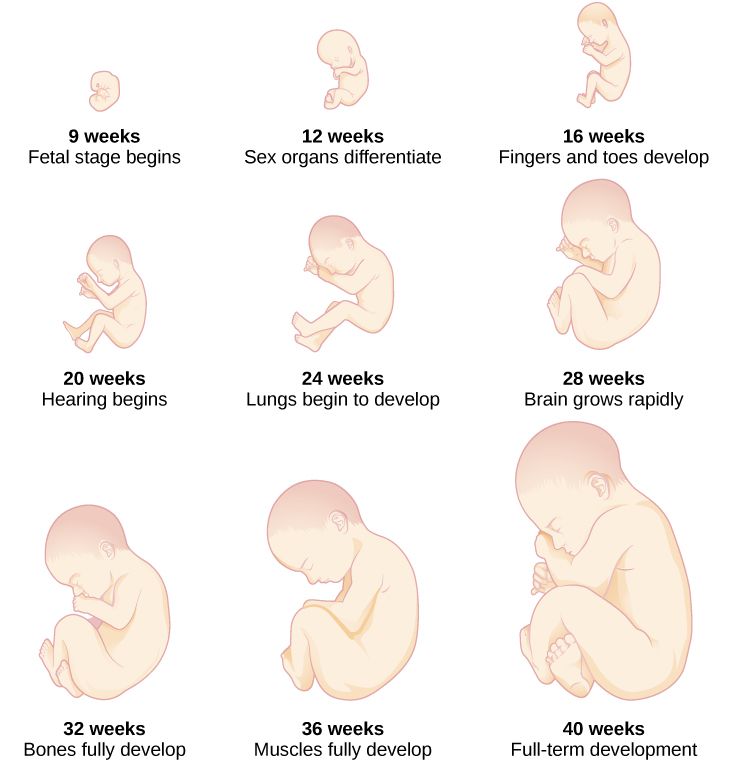 Once the cord area has healed, you can start to bathe your baby in a baby bathtub or the sink, but keep in mind that they may need bathing only three times a week for the first year, particularly if you clean the diaper area thoroughly at each diaper change.
Once the cord area has healed, you can start to bathe your baby in a baby bathtub or the sink, but keep in mind that they may need bathing only three times a week for the first year, particularly if you clean the diaper area thoroughly at each diaper change.
Here are some tips to help you navigate the first few times you bathe your weeks-old baby:
Make sure the water feels warm but not hot to the touch on your wrist or elbow.
Have all the supplies you’ll need on hand, so you're never tempted to leave your baby unattended in order to grab something you forgot.
Begin bathing your baby right after undressing them so they don’t catch a chill.
Support their head and neck as you place them in the tub or sink and as you bathe them. Keep their head and most of their body well above the water level for safety.
To wash your baby's face, use a soft washcloth and mild baby cleanser, adding shampoo once or twice a week for their hair.

If you have a boy, simply clean his genitals with soapy water as you would the rest of his diaper area. Your baby’s healthcare provider will tell you when the foreskin has separated properly, and from then on, the foreskin can be safely retracted and cleaned.
Read more about how to bathe your newborn. With a little practice, bath time can be fun for both of you!
Umbilical Cord CareYou’ll need to keep your baby’s umbilical cord stump clean and dry until it shrivels up and falls off, usually by the time they’re 3 weeks old. After the stump has fallen off, gently clean any raw spots with a cotton ball dipped in rubbing alcohol.
If you notice bleeding or signs of infection such as a smelly, yellowish discharge or red skin around the stump, contact your baby’s healthcare provider. Learn more about caring for your baby’s umbilical cord.
Your Baby’s HealthHere are some typical baby health conditions and common concerns at this stage:
Is it safe to have visitors? It’s natural to want to have close family members and friends visit you and your baby in the first couple of days after their birth, but try to limit it to only a few people, and try to keep the visits low-key so you and your baby can rest and recover.
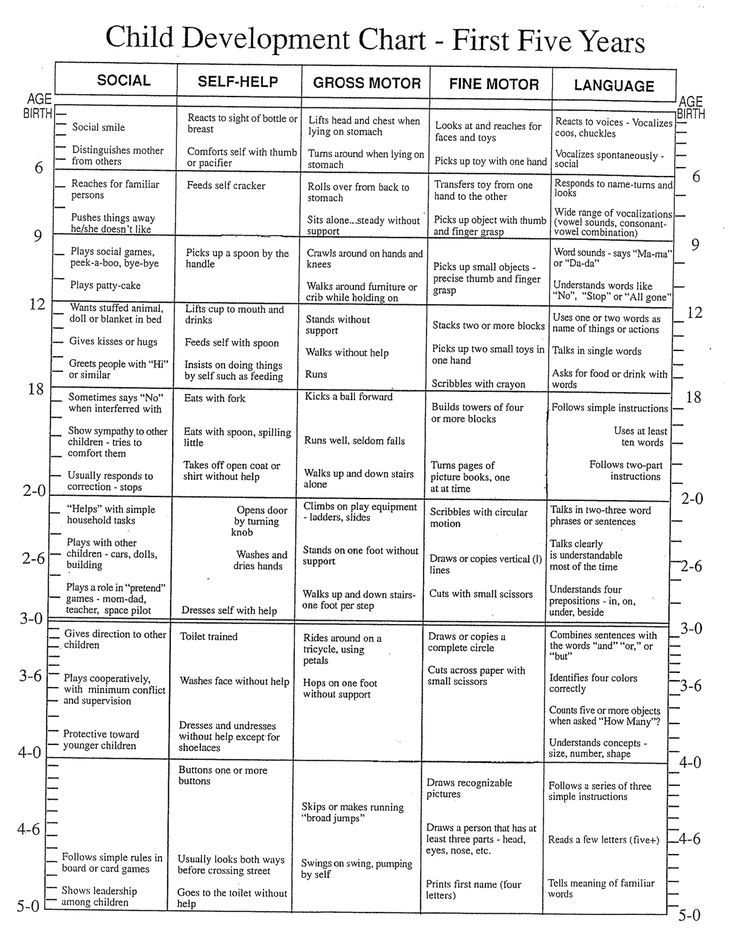 During the rest of this first month, stick to a small number of visitors, and make sure they aren’t sick, as this will help prevent your baby from catching an infection. Ask all visitors to wash their hands before touching your little one.
During the rest of this first month, stick to a small number of visitors, and make sure they aren’t sick, as this will help prevent your baby from catching an infection. Ask all visitors to wash their hands before touching your little one.Jaundice. If your baby’s skin has a yellowish tinge, they may have jaundice, a condition that develops when the liver isn't mature enough to remove a yellowish pigment called bilirubin from the blood. Your baby’s healthcare provider will diagnose and treat this condition.
Fever. Most babies will get a fever at some stage, but sometimes it can be difficult to tell when a newborn baby has an elevated temperature. In the first 12 weeks, babies with a fever need urgent medical attention, so if your baby feels warm or is unusually cranky, take their temperature with a rectal thermometer. If their temperature is 100.4 degrees Fahrenheit or higher, seek medical help right away.
How to care for a circumcised penis.
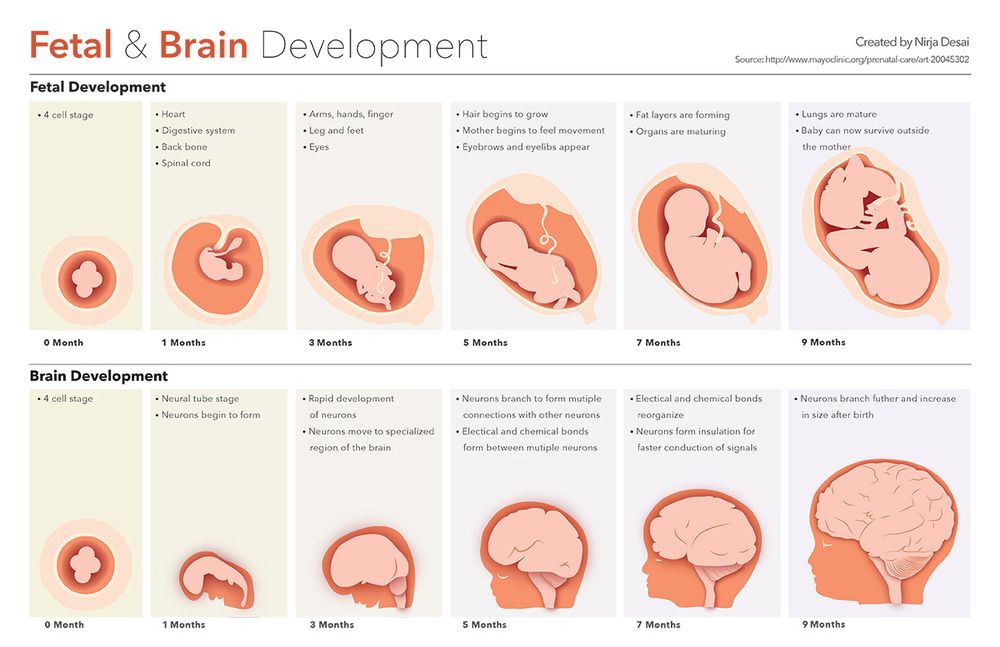 The most important thing is to keep the area as clean as possible using a mild soap and water. Redness and a yellow secretion in the first week are probably normal, but if there is swelling, crusty sores, or a cloudy, fluid secretion, contact your baby’s healthcare provider.
The most important thing is to keep the area as clean as possible using a mild soap and water. Redness and a yellow secretion in the first week are probably normal, but if there is swelling, crusty sores, or a cloudy, fluid secretion, contact your baby’s healthcare provider.
Here are a few tips that can help strengthen the bond between you and your baby in these early days and weeks:
Interact with your baby as much as you can: talking, smiling, and singing; playing with them, listening to music, and reading to them every day.
Provide positive parenting by being nurturing and responsive to your baby’s needs. Give them plenty of love and attention so they feel safe and cared for.
Create a village of support by involving friends and family members when you need the extra help. It’s hard to raise a child, especially if you’re a single parent.
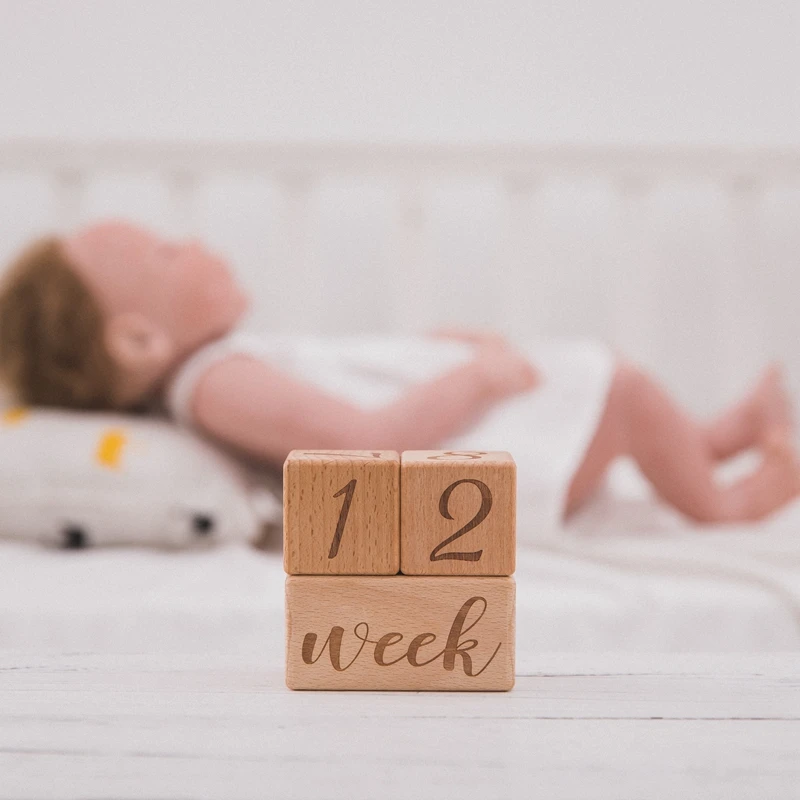 You may like to find a parent support group in your community.
You may like to find a parent support group in your community.Establish a consistent routine to help your baby become accustomed to their environment. Be sure you and your partner align on this routine, and share this routine with any other care providers, like grandparents, babysitters, and day care staff.
Whether you’ve already purchased some of the following baby gear items or have gotten them as gifts at your baby shower, you’ll be using them for the first time this month:
Car seat. You’ll need one right away in order to transport your baby home from the hospital, and for every car trip after that.
Bassinet. This item can be skipped if you're planning to use a crib right away, but some parents like to start with a bassinet before graduating to a crib.
Crib, crib mattress, and fitted sheets.
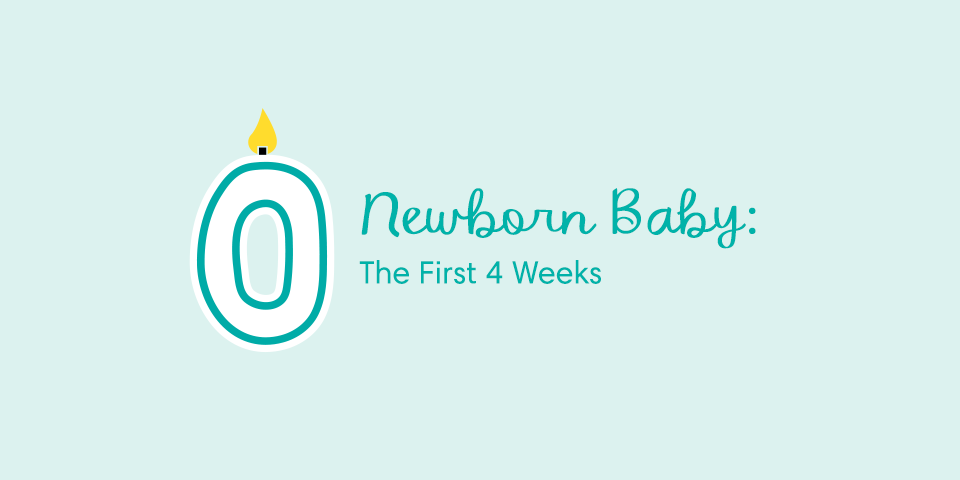 Your baby will need a safe crib to sleep in, with a firm, flat, tight-fitting crib mattress, and a tight fitted sheet to go on top.
Your baby will need a safe crib to sleep in, with a firm, flat, tight-fitting crib mattress, and a tight fitted sheet to go on top.Stroller. You may not utilize your stroller immediately, but it's handy to have one ready to go with a newborn insert for that first opportunity when you take your baby outside.
Glider or rocking chair. This is a nursery must-have for those late-night feedings and moments when you need to soothe your baby.
Swaddle blankets or sleeping sacks. Many babies sleep more soundly when they're snuggled up like a bug. You can learn how to swaddle your baby using a blanket or use a sleeping sack to keep them warm and comfy as they snooze.
Baby carrier. Carrying your baby is a great way to keep them close by when they’re newborns and also helps promote bonding.
Diaper bag. No matter where you go, you’ll need a diaper bag to transport all of your baby’s things, including diapers, wipes, and an extra change of clothes, among other necessities.
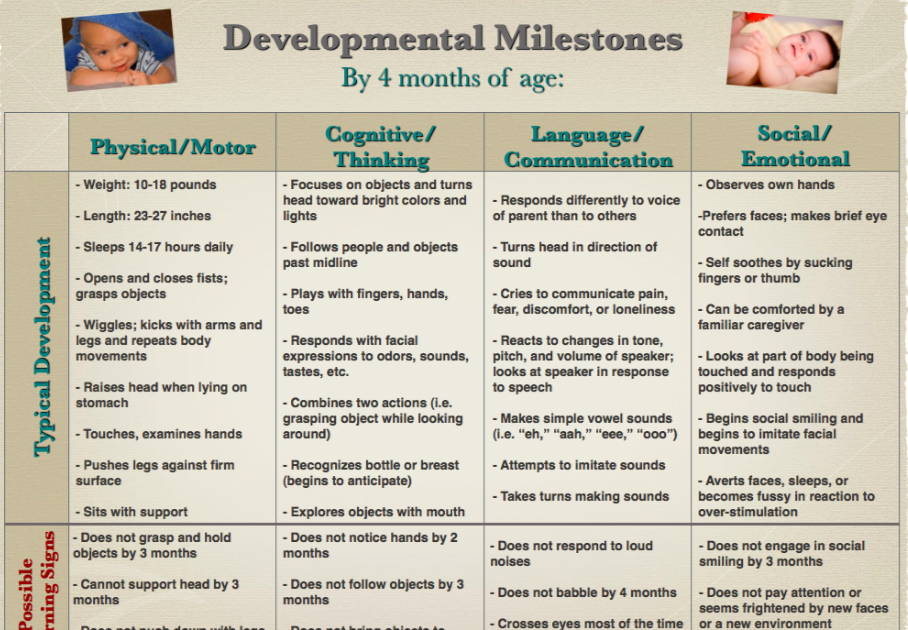
Changing pad. You’ll want a soft pad on which to change your baby, and one that’s easy to pack and travel with is even better.
Diaper pail. This is one item you won’t want to skimp on. A diaper pail provides a convenient place to toss dirty diapers and helps control odors, too.
Diapers, wipes, and diaper rash cream. You’ll be going through a lot of diapers in these first weeks and months, so it’s a great idea to stock up on all the diapering supplies in advance.
Breast pump and nursing bras (if you’re breastfeeding). These are items you’ll want for yourself, just to make breastfeeding a little easier.
Bottle warmer, baby bottles, and nipples. Along with a supply of bottles and nipples, some parents like the ease of having a bottle warmer.
Burp cloths. Just to keep things as mess-free as possible, have a stack of burp cloths at the ready.
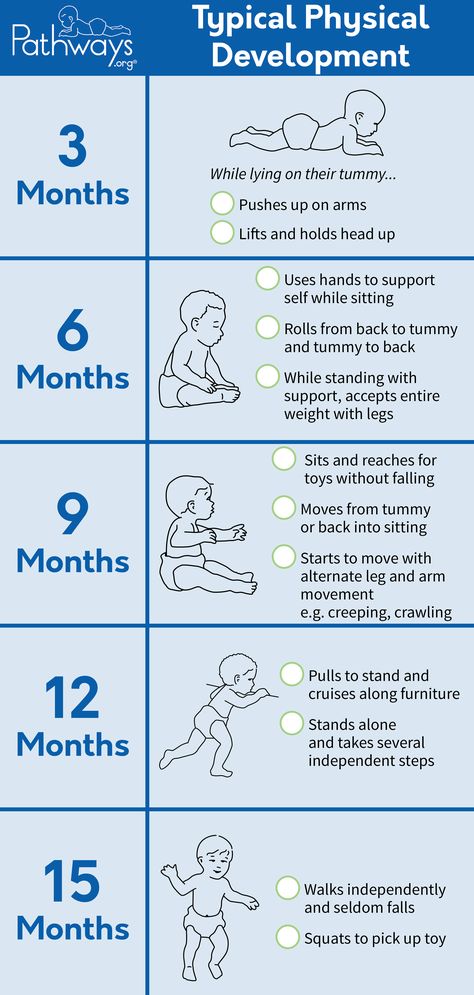
After your child’s birth, you might feel a mixture of happiness, pain, and exhaustion. Your emotions may be heightened by stress. You’re also getting used to some new routines: feeding, changing diapers, and putting your baby to sleep. Plus, you may be getting much less sleep now than you’re used to. Know that you’re not the first or last parent to feel overwhelmed at this time, and it can be natural to cry.
However, if you, as the mom, feel severe feelings of sadness, emptiness, apathy, or despair, you may have postpartum depression. Let your healthcare provider know how you are feeling, because there is help available.
Physical recovery after giving birth—whether vaginally or via a cesarean section—takes time. Here are some of the physical effects you could experience around this time:
Bleeding. You’ll shed the blood and tissues that lined the uterus (this vaginal discharge is known as lochia).
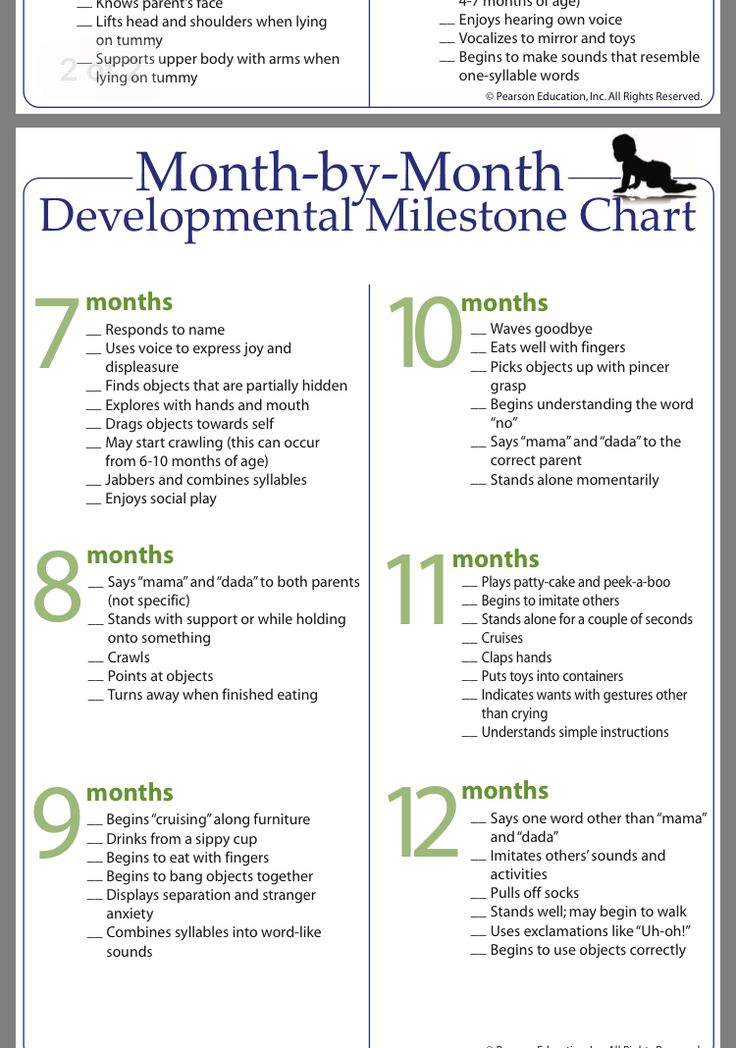 Initially the bleeding may be heavy, but it will lighten over the next few weeks. Contact your healthcare provider if you bleed through two pads in an hour, for two hours in a row.
Initially the bleeding may be heavy, but it will lighten over the next few weeks. Contact your healthcare provider if you bleed through two pads in an hour, for two hours in a row.Uterine contractions. For about 10 days after giving birth, you may experience afterbirth pains as your uterus shrinks back to its normal size.
Perineal pain. When you give birth vaginally, the skin between your vagina and anus—the area known as the perineum—stretches so that your baby’s head can fit through. Sometimes this skin tears and will either heal on its own or require stitches. To help ease the swelling and pain, you can apply cold packs to the area; you can also try sitting on a soft pillow.
Stretched abdomen. In the days after you give birth, your tummy may still look pregnant, as the abdominal muscles don’t snap back right away. Give your body plenty of time to recover, and check with your healthcare provider before starting to exercise.

Constipation. It may be tricky to have a bowel movement in the first few days after giving birth. You might be afraid of the pain, or have sluggish bowels due to pain medication or simply because you didn’t eat during labor. Ask your healthcare provider for advice on what to do. Drinking more water and eating high-fiber foods might help.
Fatigue. Given the huge job you’ve done both physically and emotionally, it's natural and normal to feel tired. You’ll need some time for your energy levels to recover. In the meantime, ask for help when you need it, limit visitors, and try to sleep when your baby sleeps.
Consult your healthcare provider to learn how to treat any bothersome symptoms and for general advice about healing after childbirth. Try to rest as much as possible and eat healthily. And, when your provider gives you the all-clear, add some gentle postpartum exercise to your daily routine.
Checklist for This MonthSchedule your baby's 1-month checkup and ask your baby’s healthcare provider’s office about any other checkups, physical exams, screening tests, or immunizations your baby needs this month.
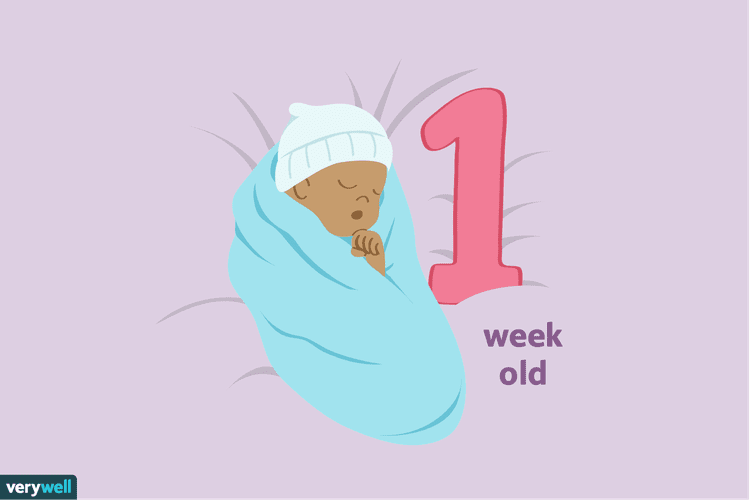 Experts recommend at least one office visit when your baby is between 2 and 4 weeks old to make sure they’re doing well.
Experts recommend at least one office visit when your baby is between 2 and 4 weeks old to make sure they’re doing well. You might like to become familiar with the standard immunization schedule for babies and young children. Keep in mind that your baby’s healthcare provider will advise you on what immunization is needed next for your baby.
Make a list of any questions or concerns you have for your baby's healthcare provider and ask them at your next visit. Important topics you may want to raise can include your baby’s
bowel movements (diarrhea and/or constipation)
vomiting
hearing or vision problems
sleep disruptions
fevers and/or infections
rashes
weigh gain and/or loss.
Stick important contacts and phone numbers on the fridge and save them in your phone. These should include your baby’s healthcare provider, the poison information hotline (1-800-222-1222), and the emergency medical services (ambulance) number (which is usually 911).
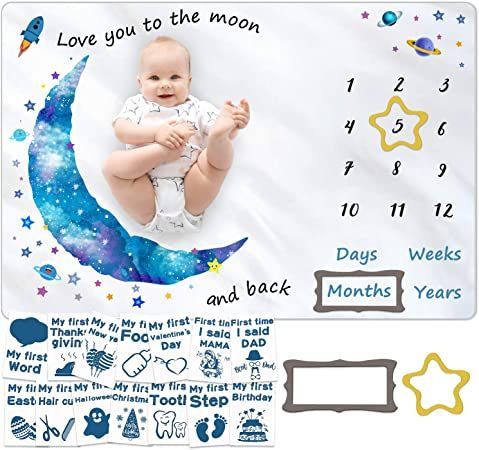
Get a first-aid kit for home, which can be useful for any minor illnesses or accidents.
As your baby grows, you may be wondering when it’s time to go up a diaper size, so check our diaper size and weight chart.
As you look ahead to next month, check out our article dedicated to 1-month-olds.
Your baby will be 1 month old soon so download these milestone cards to celebrate the big day, and to help you share the news with friends and family.
For even more information, sign up to get our regular emails:
Child development calendar: first week of life
home
Parents
How to raise a child?
Child development calendar: first week of life
- Tags:
- Expert advice
- 0-1 year
- mental development
- tactile sensations nine0024
- your baby is not eating well (during the previous 24 hours he ate infrequently and briefly, or he ate only half a portion of the bottle, he often vomits)
- your baby is very upset and cannot be calmed down, or is sleepy and has difficulty waking up
- he has pale or yellow skin
From the moment a child is born, the so-called neonatal period begins, which lasts for the first month of his life. During this period, the baby adapts to new conditions: from the warm and dark space of his mother's belly, which tightly "hugged" him in the last weeks of pregnancy, he enters a world filled with bright light, sounds, smells and different sensations. Nature gives the child about three weeks to adapt to the new conditions of life, and this is the most difficult period in his life. Therefore, when organizing care for a newborn, it is important for parents to learn to understand and satisfy the needs of the baby in order to help him successfully adapt to the world around him. nine0003
During this period, the baby adapts to new conditions: from the warm and dark space of his mother's belly, which tightly "hugged" him in the last weeks of pregnancy, he enters a world filled with bright light, sounds, smells and different sensations. Nature gives the child about three weeks to adapt to the new conditions of life, and this is the most difficult period in his life. Therefore, when organizing care for a newborn, it is important for parents to learn to understand and satisfy the needs of the baby in order to help him successfully adapt to the world around him. nine0003
In the first episode of the program from the series “We are parents!” singer, actress and mother Anna Rudneva talks about her experience of raising a child from birth to a year.
Physiological features of the development of the child in the first week of life
Nutrition of the child in the first week of life
At first, the baby eats very often.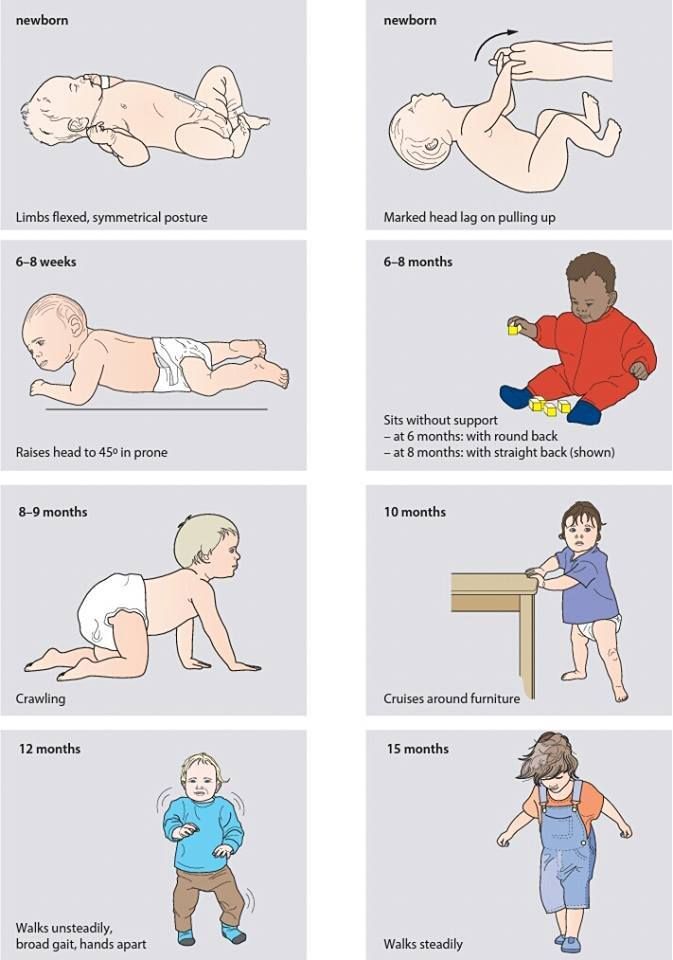 The best food for him is breast milk, which contains all the necessary nutrients and vitamins. In addition, breast milk is an “individual product” that the mother’s body produces only for this child, taking into account his needs and state of health. The composition of breast milk varies with the age of the baby. So, in the first two or three days after birth, he feeds on colostrum, which has a rich and valuable composition. Modern pediatricians recommend feeding a breastfed baby on demand, that is, as many times as he wants. nine0003
The best food for him is breast milk, which contains all the necessary nutrients and vitamins. In addition, breast milk is an “individual product” that the mother’s body produces only for this child, taking into account his needs and state of health. The composition of breast milk varies with the age of the baby. So, in the first two or three days after birth, he feeds on colostrum, which has a rich and valuable composition. Modern pediatricians recommend feeding a breastfed baby on demand, that is, as many times as he wants. nine0003
Baby's sleep in the first week of life
In the first month of life, the baby sleeps a lot - 19-20 hours a day, waking up every two to three hours to eat. The periods of wakefulness of a newborn do not depend on the time of day, and sleep is significantly different from that of an adult. Infants are characterized by the so-called superficial phase of sleep. If a sleeping baby is disturbed during this period, he can easily wake up.
Features of the skin of newborns
The skin of a newborn baby has a number of features.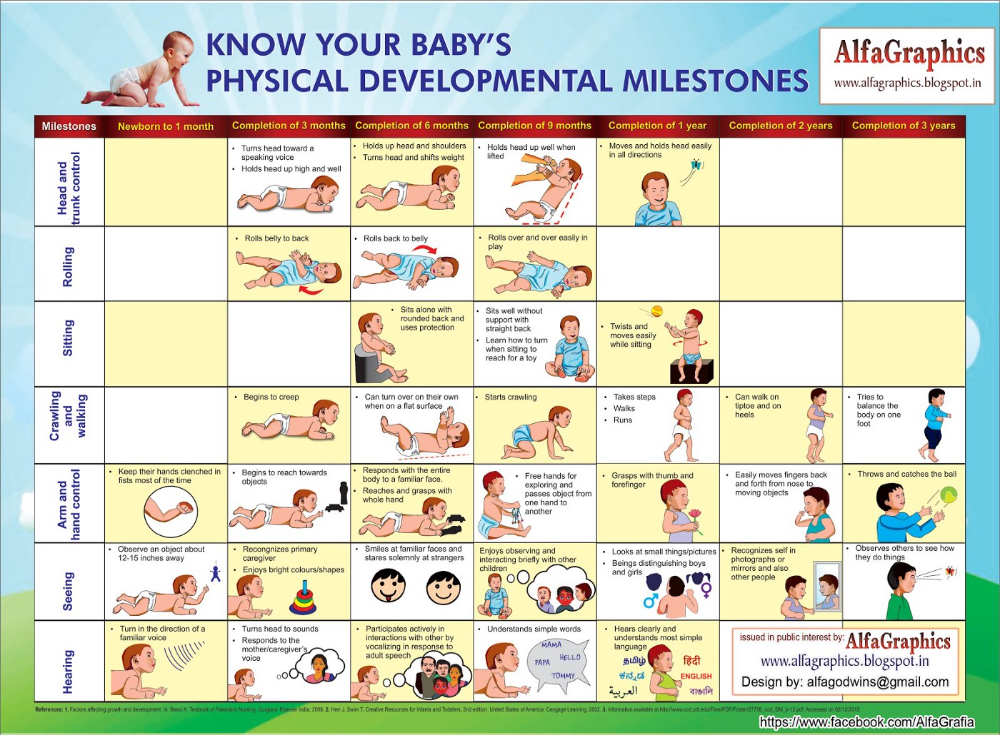 It is rather dry and thin, easily vulnerable and prone to irritation. On the wings of the nose and cheeks of the baby, whitish or yellowish “dots” may be noticeable - the result of the accumulation of the secretion of the sebaceous glands. Also on the forehead, back of the head and upper eyelids of the child there may be purple-bluish spots that will disappear in a few weeks.
It is rather dry and thin, easily vulnerable and prone to irritation. On the wings of the nose and cheeks of the baby, whitish or yellowish “dots” may be noticeable - the result of the accumulation of the secretion of the sebaceous glands. Also on the forehead, back of the head and upper eyelids of the child there may be purple-bluish spots that will disappear in a few weeks.
Also on the skin of healthy newborns, the so-called physiological erythema can be observed - expansion of the skin capillaries, which looks like redness. This is the result of adaptation of the skin to the environment. Normally, this phenomenon disappears within ten days and does not require treatment. However, if physiological erythema has not passed after this period, parents should show the child to the doctor. nine0003
Mental development of a newborn child
According to child psychologists, in addition to physiological needs, the main need of the baby during this period is the need to feel the presence of the mother, the warmth of her body, the beating of the heart.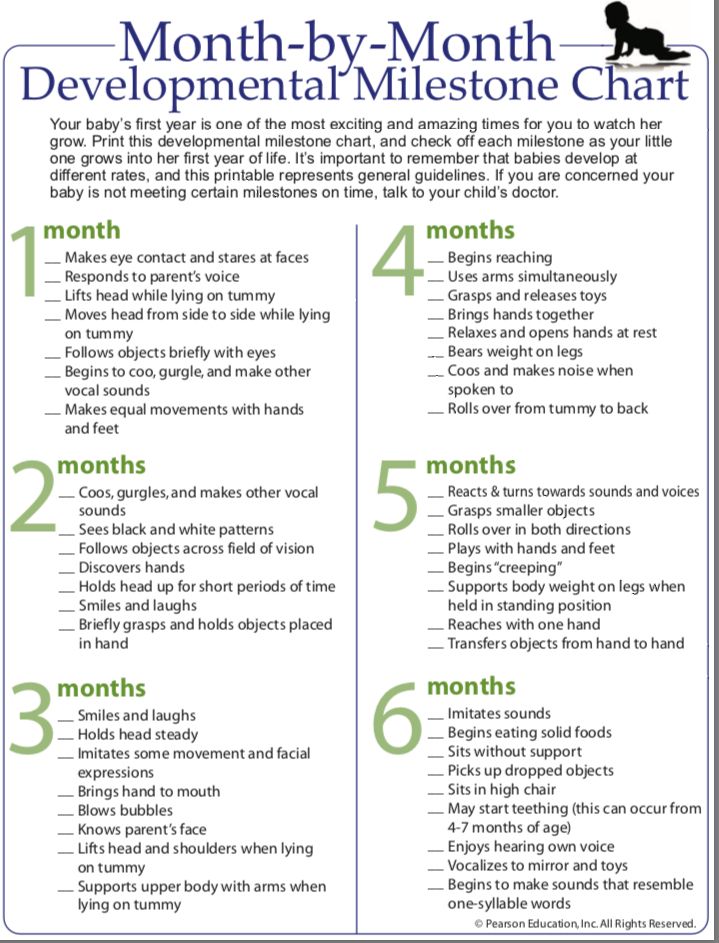 The presence of an adult nearby, who is able to understand his needs and eliminate troubles, gives the newborn a sense of security, forms his basic trust in the world - the feeling that the world is reliable and safe. Therefore, the most important for the full mental development of the child during the neonatal period is the physical presence of parents, mainly mothers. nine0003
The presence of an adult nearby, who is able to understand his needs and eliminate troubles, gives the newborn a sense of security, forms his basic trust in the world - the feeling that the world is reliable and safe. Therefore, the most important for the full mental development of the child during the neonatal period is the physical presence of parents, mainly mothers. nine0003
The emotional state of the newborn and the formation of temperament
Even before birth, the child is able to respond to the mother's emotional state. All experiences of the mother, both positive and negative (including stress), are immediately transferred to the psychological state of the child. Therefore, if the mother is constantly nervous or angry, the baby can become moody and whiny.
The mother's temperament and mood also influence the formation of the child's own worldview, attitude towards others and life in general. nine0003
The first knowledge of the world a newborn takes with mother's milk.
Feelings and sensations of a newborn: crying
Mothers should know and remember that a newborn's feelings and sensations are not differentiated from emotions. The baby communicates his needs to his parents in the only way available to him - by crying. Most often, it is caused by hunger or thirst, the need for warmth, wet or dirty linen, various physical inconveniences associated with a static body position or clothing. At first, parents do not distinguish the crying of a hungry child from the crying of a child who is cold or overheated. But the newborn does not yet know what he wants. The kid feels that “something is wrong” and reports it. Therefore, he willingly accepts everything that is offered to him: breasts, a warm blanket, stroking his tummy. After some time, the baby begins to understand that he will be relieved of discomfort. And then next time he will spit out the pacifier and throw off the blanket with his legs. nine0003
A newborn's need for love and care
During the newborn period, it is especially important for a child to feel the love and care of his parents, so he strives for bodily contact with his mother, calms down in her arms.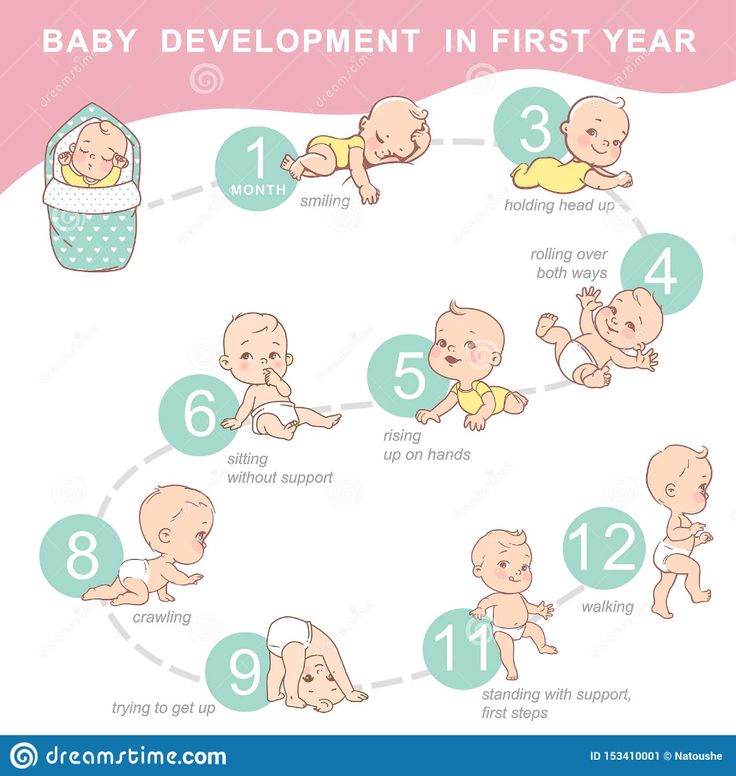 Experts in the field of psychology agree that for seven to eight months a child should be held in her arms as often as possible, while carrying her around the house, naming the objects and actions of others. Thus, the parent recreates the work of the infant brain, specifically focusing on the right things, choosing them from the chaos of the surrounding world. nine0003
Experts in the field of psychology agree that for seven to eight months a child should be held in her arms as often as possible, while carrying her around the house, naming the objects and actions of others. Thus, the parent recreates the work of the infant brain, specifically focusing on the right things, choosing them from the chaos of the surrounding world. nine0003
A child's ability to love is laid in early childhood, and it directly depends on the amount of love given to him by loved ones. At this stage, the distinctive features of the character of each child are born, which will then become decisive in the formation of personality. During this period, positive emotions and confidence in universal love are no less important for the child.
The amount of attention and care shown has a strong influence on the development of a newborn child, especially on the manifestation of the infant's trust or distrust in the world around him. The more often a child is approached, touched, stroked and talked to, the more comfortable he is in the new world, he feels love and care, and his fear of the environment gradually disappears.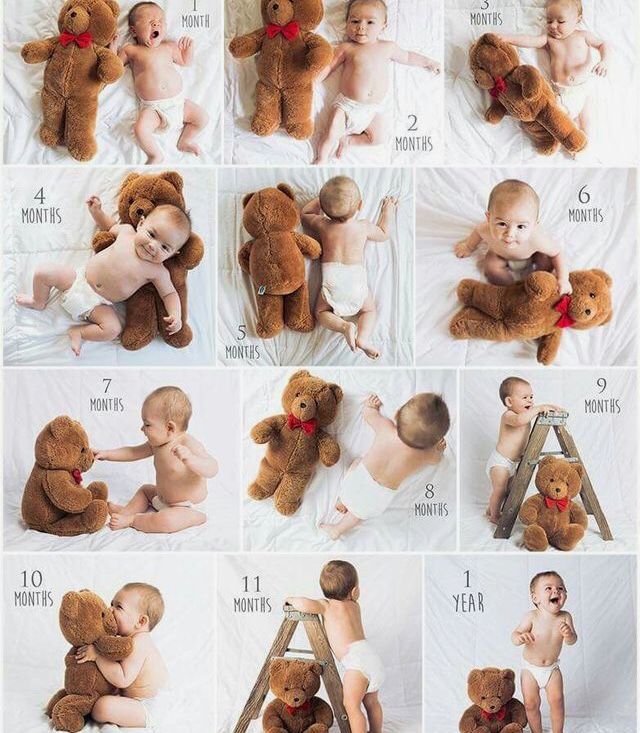 And, conversely, the less tactile communication, affectionate words and kind intonations, the more suspicious the newborn is about the environment. Over time, the feeling of distrust in people can develop into fear and other psychological problems (for example, low self-esteem). In addition, the restriction of communication between mother and child may subsequently adversely affect the development of speech, even if the principles of nutrition, hygiene and care were not violated. nine0003
And, conversely, the less tactile communication, affectionate words and kind intonations, the more suspicious the newborn is about the environment. Over time, the feeling of distrust in people can develop into fear and other psychological problems (for example, low self-esteem). In addition, the restriction of communication between mother and child may subsequently adversely affect the development of speech, even if the principles of nutrition, hygiene and care were not violated. nine0003
Parents can learn how to choose the right toys for children under the age of one by watching a video lesson with the participation of the president of the Association of Children's Goods Industry Enterprises, psychologist Antonina Tsitsulina.
For the sake of the child?
What are you willing to do for your child? Answer the questions of the test, compiled by the psychologists of the portal "I am a parent", and it will complement your idea of yourself as a parent, help you draw conclusions about the problems of raising children.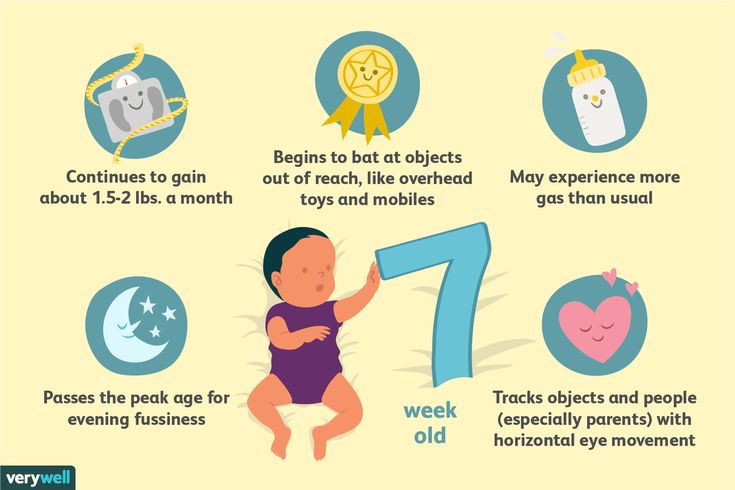 nine0003
nine0003
Take the test
The first week of a newborn's life | Bebbo
Before leaving the hospital, carefully read all the documents offered to you and, if necessary, contact your pediatrician for additional information about standard or, if recommended, additional examinations by specialists. Find out if you can take your baby to a children's clinic for an examination, if necessary.
After discharge from the maternity hospital, the mother and newborn are taken care of by a visiting nurse from the children's polyclinic. If you think your child has a problem or something is bothering you, talk to the nurse or pediatrician about it. nine0003
Appearance of the newborn
Birth edema subsides and the newborn's head "returns" to its normal shape. If at birth the baby had swelling of the face and eyelids, as well as hematomas and broken capillaries on the skin of the face, then they disappear. The baby may experience jaundice: the skin on the face and body, as well as the whites of the eyes, turn yellow.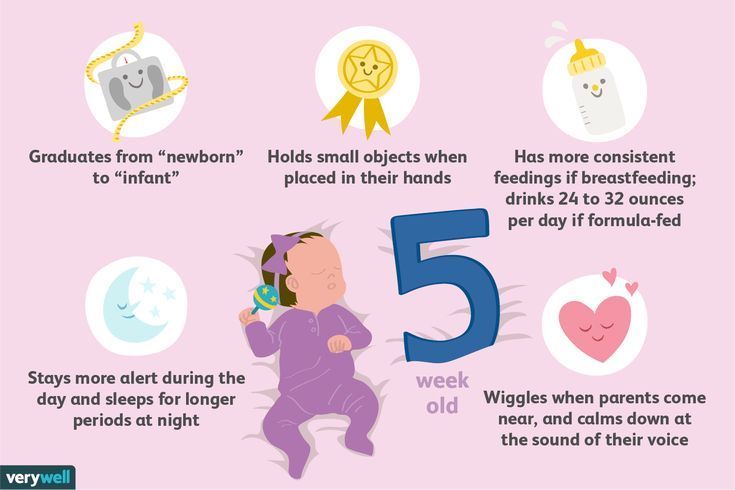
The umbilical cord slowly dries up, turns black and eventually falls off, usually by the 10th day of the baby's life. Keep the cord residue clean and dry. If the skin around it becomes red or sticky, seek medical attention. nine0003
The skin of a newborn baby may appear birthmarks ; they are either noticeable already at birth, or they are discovered later. This is common and usually harmless, but if you're concerned, contact your health visitor or pediatrician.
Weight loss is an expected and physiological phenomenon observed in the first days of life; The baby's stomach is tiny, and at the first meals, he consumes only 5-10 milliliters of milk. The baby passes large first stools (called "meconium"), and sometimes excess fluid if mothers give more fluid through an IV during labor or caesarean section. Babies are usually discharged from the hospital with a weight that is 5-7% below their birth weight, and the maximum weight loss that should not worry parents or pediatricians if the child is healthy and eats well is 9-10%.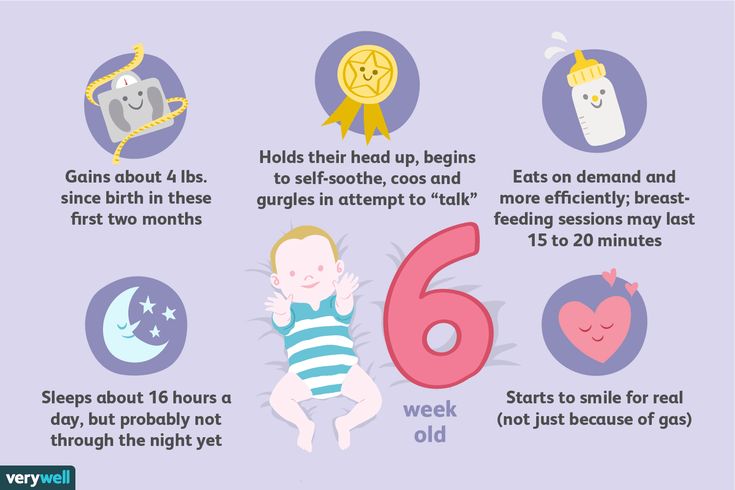 If there is a large weight loss, the baby and mother stay in the hospital until it is absolutely clear that the baby eats well and begins to gain weight. A return to birth weight is expected between the 10th and 14th day of life. During this period, you do not need to additionally introduce infant formula into the baby's diet!
If there is a large weight loss, the baby and mother stay in the hospital until it is absolutely clear that the baby eats well and begins to gain weight. A return to birth weight is expected between the 10th and 14th day of life. During this period, you do not need to additionally introduce infant formula into the baby's diet!
Seek medical attention as soon as possible if:
Feeding and sleeping during the first week of life
During the first week of life, your newborn baby spends most of his time in the following way: he sleeps and wakes up every few hours to eat. Newborn babies stay up all night, have tiny stomachs, and get hungry quickly.
In the first weeks, the baby does not have an established rhythm of wakefulness and sleep. On average, he sleeps about 18 hours a night, so (with the exception of dressing/diaper changes and feedings) his periods of wakefulness are short.
Most babies need to be fed every 2-4 hours and usually get hungry 8-12 times a day. The stomach of a newborn is small and cannot contain a large amount of milk. Breast milk is digested very quickly, on average within 90 minutes, so the child will soon get hungry again. Each baby has its own distinct personality from birth; even very young babies have their own eating habits, just like adults. Some babies eat 6-8 times a day, while others prefer to "snack" more often, so they eat 12-14 times.
Babies wake up on their own to feed, but it usually takes time to establish a feeding and sleeping pattern.
Some babies are sleepy and more passive in the first weeks (especially premature babies, babies with low birth weight or with health problems or large weight loss in the early days).
In this case, you should wake up the babies every three hours, change their diapers or change clothes so that they wake up and apply them to themselves (skin to skin) to stimulate more active breast sucking. Be sure to control the child's weight more often. nine0003
Every day the baby adapts and reacts to the environment, and parents learn to recognize the needs of their child. The baby signals what he wants, you learn to understand what he tells you, perform certain actions that you have learned, and somewhere at this stage, you gradually develop an understanding of the needs of the baby. This period, when you get to know each other, can be difficult for all family members. In order to ensure peace for parents and the child, postpone the celebration of the birth, the gathering of relatives and friends at home. It will take you at least a month to recover from childbirth, adapt to the rhythm of the baby, and establish breastfeeding. When mom, dad and baby begin to interact as a well-coordinated team, you will have time for holidays and communication with loved ones.